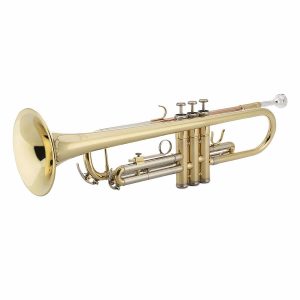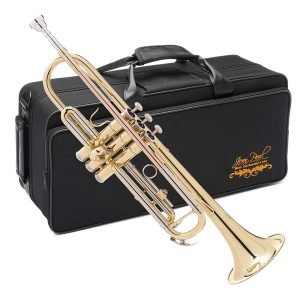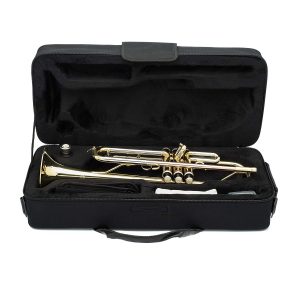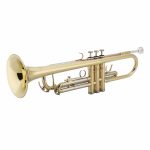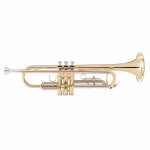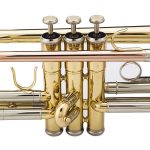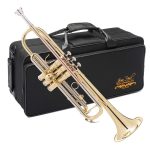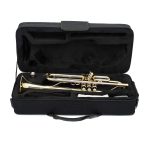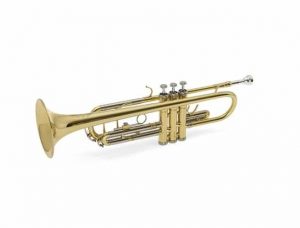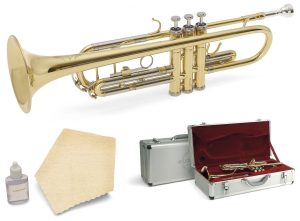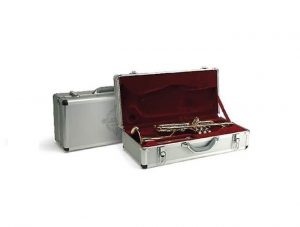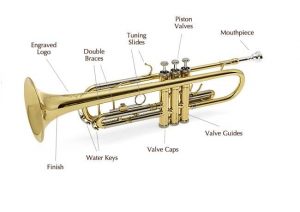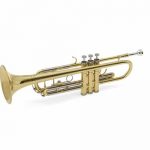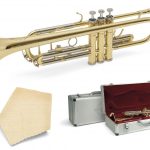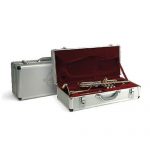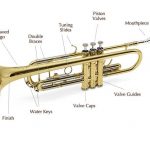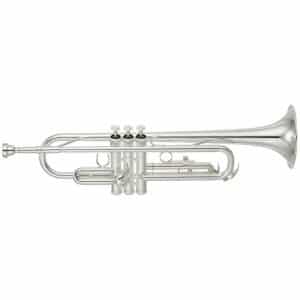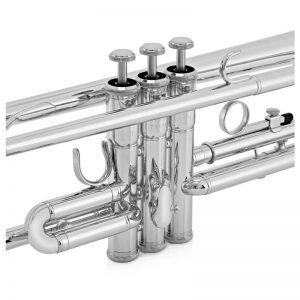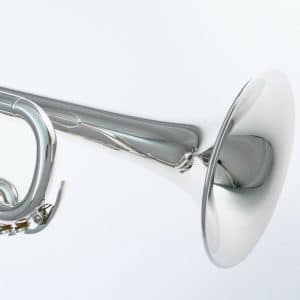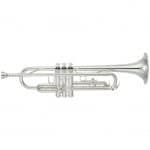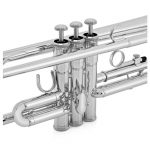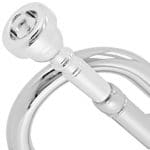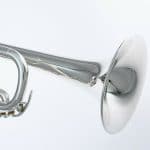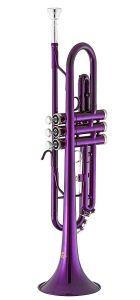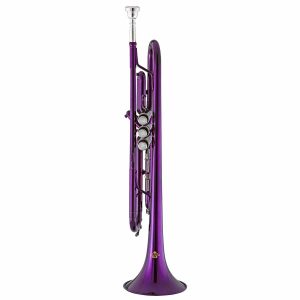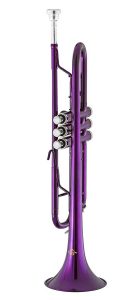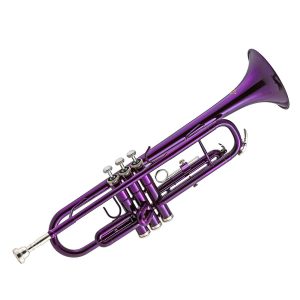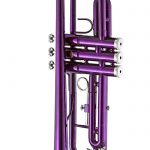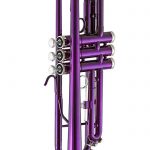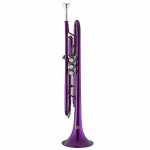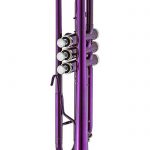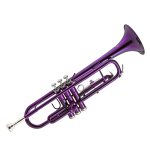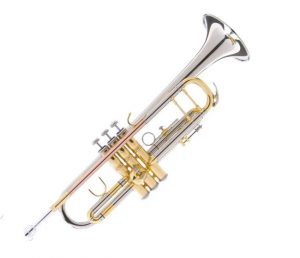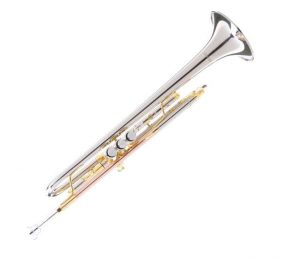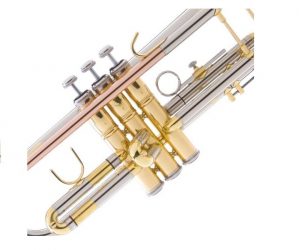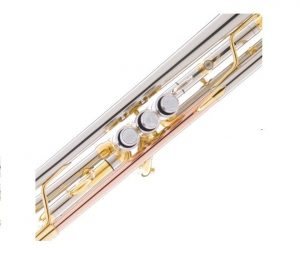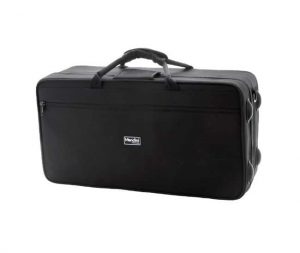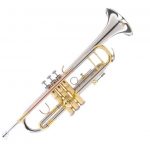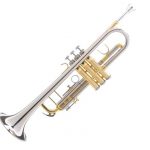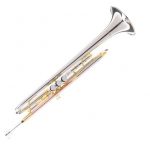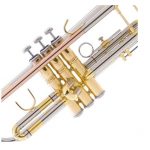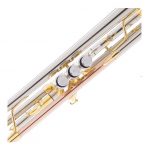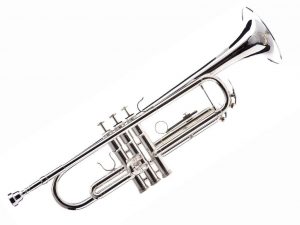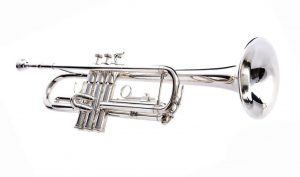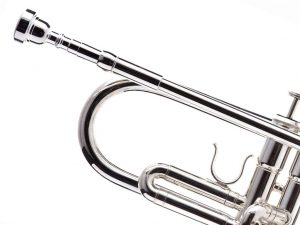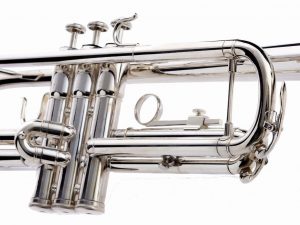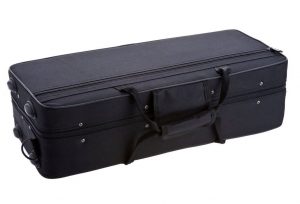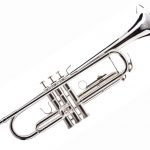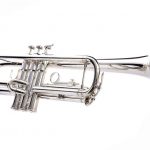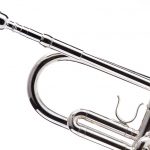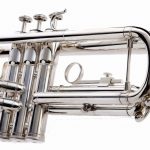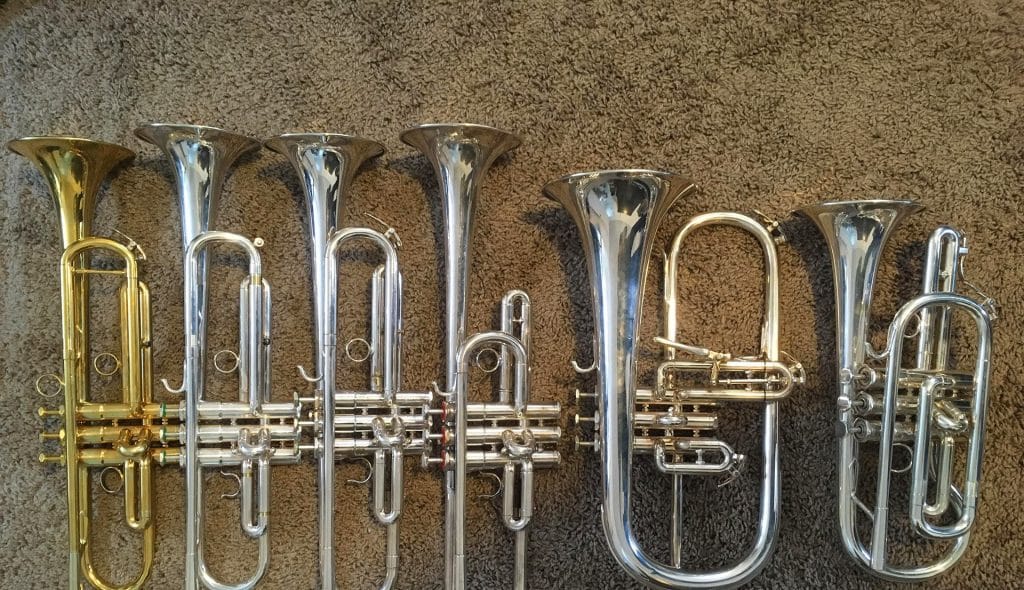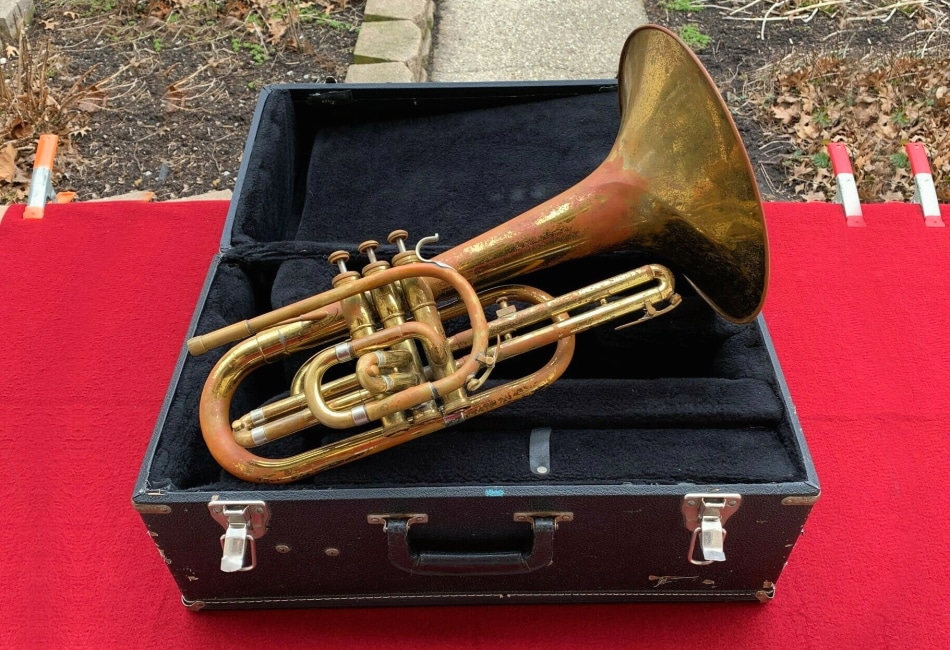Trumpet for intermediate players – what to expect from the instrument
An intermediate trumpet places you directly in between the skillset of a beginner, and a professional. Once you’ve surpassed the beginner’s level you can expect to move on to an intermediate level trumpet for further development.
Intermediate trumpets have a sturdier build and more capability to them to encourage improvement. They are not though, in any way the same standard as a professional grade trumpet. There are separate trumpets in this class.

Price tag
Naturally, you’ll be looking at a certain budget when searching for an intermediate level trumpet. These trumpets are better than a beginner’s yet not the standard of a professional.
The budget you’re looking for when it comes to a better-quality intermediate trumpet is $200 to over $1000. If you reach $5000 to $10,000, you’re probably looking at professional grade trumpets.
Keep an eye out for those intermediate trumpets that are $200, they might be beginner trumpets.
From student to intermediate – tips for upgrade time
The first step to making this change is to know what’s in store when you transfer from a beginner level trumpet to an intermediate level trumpet.
Firstly, the intermediate trumpet has an additional valve ring and is relatively lighter than the beginner trumpet. With the intermediate trumpet, most people get a better and more comfortable grip on their trumpet, with a finer tuned sound with the additional tuning.
To know when you want to make the new step, just try out holding an intermediate trumpet first, to see if you get the comfortable grip you want. Intermediate trumpets are for those people who have some experience and skill with trumpets but don’t need to cover the basics anymore.
Consider the following features to choose the perfect intermediate trumpet
There are some new and old features you have to keep in mind when selecting your intermediate trumpet to make it perfect for you. Each trumpet’s sound will indefinitely be different from one another so it’s better to have a general understanding of any trumpet’s build. With this knowledge you can discern what will make your trumpet individual and closer to your perfection.
Finish and materials
When it comes to a finish on intermediate trumpets, you can encounter either a lacquer or silver-plated finish. Lacquer finishes bring out a deeper sound and is applied by spraying and baking the layer. A silver-plating brings out a lighter sound and is more durable than the lacquer finish.
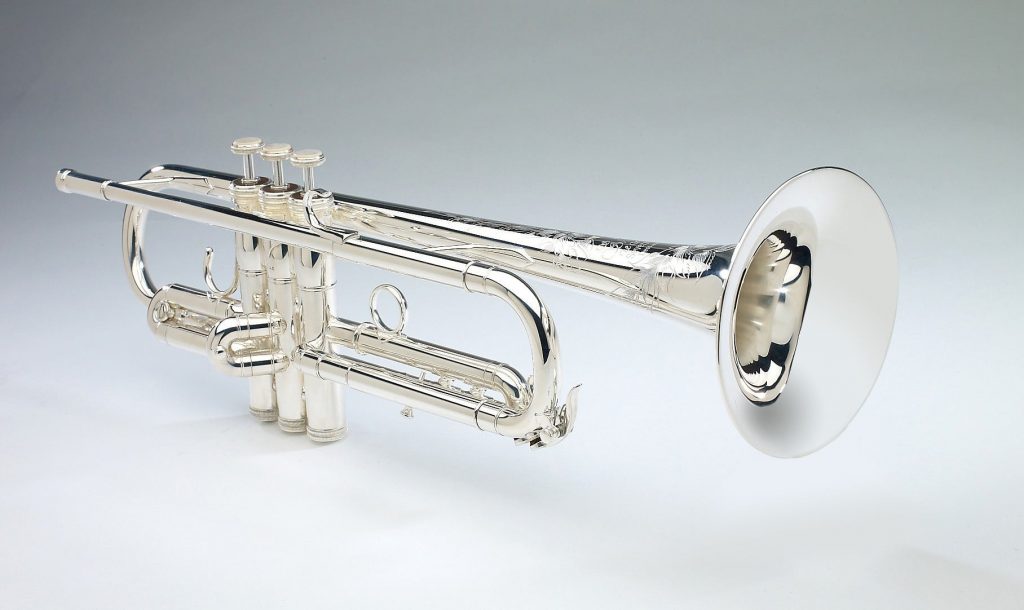
The Yamaha YTR-2330 is a silver-plated finish for example, while the Jean Paul USA TR-430 is a lacquer finish.
If you’re looking at a gold-plated finish, you’re looking at a professional trumpet.
Weight and balance
All trumpets will weigh around the same, but it’s about the feel you receive when you hold your trumpet.
You’ll want a balance between how you hold the trumpet while you’re playing it and when trying to keep it up to your mouth. You don’t want it to weigh too much that you can’t lift it up for practice and long periods. Before dedicating yourself to a trumpet, find one that is small and light enough to hold properly but not too small and light that it feels cheap, as if you’re holding a toy.
Mouthpiece
The mouthpiece can be considered one of the most important parts of the trumpet. Without the proper mouthpiece, you won’t be able to make the right sounds or even implement your breath into the instrument.
You can come across a deep cup, which will bring out a softened and warmer sound. If the cup is shallow, you can expect a generally higher tone to the trumpet. Shallow cups give a sharper noise and respond more efficiently to high notes.
The Kaizer TRP-1000PL has a changeable mouthpiece which allows you to change it to your preference.
Sound
You can say all trumpets are the same, but you’d be looking at the picture with blind eyes. The truth is that each trumpet’s noise comes out a little differently since not even the best craftsmen have control over the exact sound that comes out.
Before you choose your trumpet, it’s better to get a preview of what the trumpet sounds like first. You’ll discover a difference with each note between trumpets and eventually, based on your musical preference, you’ll find the perfect trumpet.
Bore and bell sizes
The bore and bell do make a significant difference to the sound of the trumpet, though just to be sure you’re getting the best out of your purchase, it’s best to try out the instrument before buying.
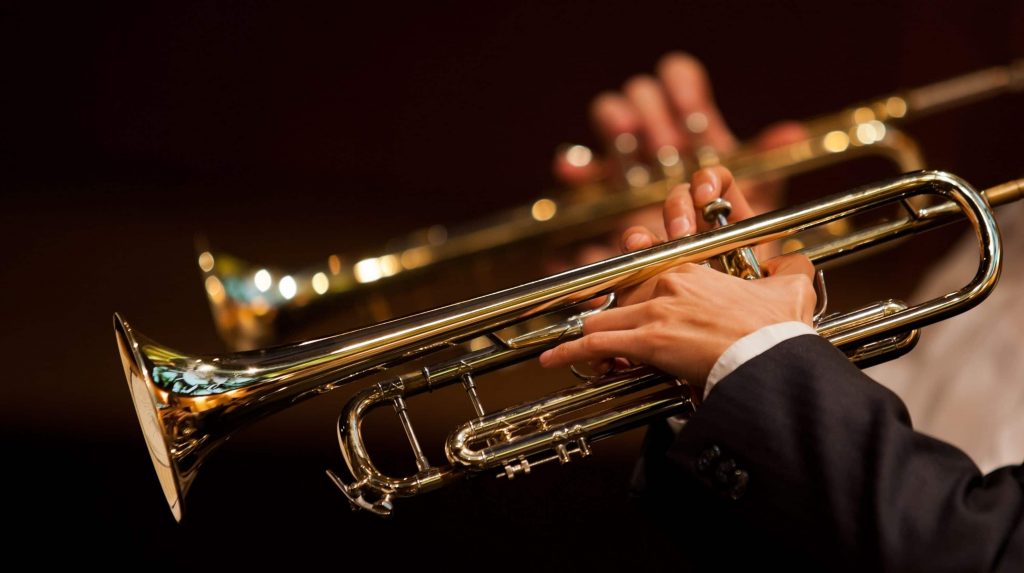
The bore, when thicker in diameter gives off a thicker and deeper sound, which can be harder to manage.
The bell, when smaller gives of a more repressed and sharper note while bigger bells will provide you with a deeper and mellower tune.
Key
The Bb trumpet is one most commonly found since it’s the most produced and sold style trumpet in the market. Starting off with a Bb trumpet is the best idea since the window for this trumpet is vastly open.
The C trumpet is less commonly found but still frequently seen. The C trumpets are used in a more professional grade and have a brighter sound than that of the Bb trumpet. All of the trumpets found on this list are Bb keys.
Leadpipe
The leadpipe, also known as the mouthpipe is the longest tube on the trumpet that controls the airflow. This, therefore is an important part on the trumpet. What your main concentration should be over is the bore diameter. This affects the depth of the sound. The larger the bore, the deeper the sound.
Valve
All intermediate trumpets, such as the one listed in this review have three valves to greater control the twelve notes you can move through. The first valve takes the note down by one, the second one takes it down a semitone and the third by one and half tones. The tones can only be properly navigated through with the tuning slider.

Accessories
There are accessories available with the purchase such as an instruction book, a cleaning kit and sometimes you can even get a maintenance repair plan.
The Mendini MTT-30CN comes with an abundance of accessories.
Warranty
There’s never harm and only gain with getting a warranty. In the hands of a student, anything can happen to the trumpet so it’s better to have coverage for any accidents or replacement parts.
How to clean a trumpet
Firstly, you want to take your trumpet apart so all moving parts are separated from the body. Place all of the individual pieces in a tub of water and soap. With your cleaning instruments, get into all of the valves, the slide, the pipes, and the bell.
Let all of the parts drip dry on a rack. You can lightly rub the pieces with a rag but you do risk scratching the coating. Oil the valves and grease the slide. Place everything back together and you’re good to go.





